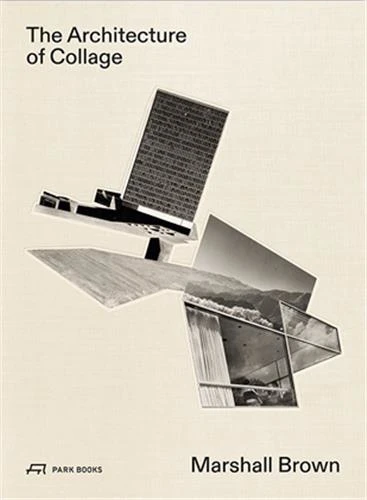The Architecture of Collage
Par :Formats :
- Paiement en ligne :
- Livraison à domicile ou en point Mondial Relay indisponible
- Retrait Click and Collect en magasin gratuit
- Réservation en ligne avec paiement en magasin :
- Indisponible pour réserver et payer en magasin
- Nombre de pages123
- PrésentationRelié
- FormatGrand Format
- Poids1 kg
- Dimensions23,0 cm × 31,0 cm × 0,0 cm
- ISBN978-3-03860-291-0
- EAN9783038602910
- Date de parution17/08/2022
- ÉditeurCoédition Park Books/Santa Barba...
- ContributeurAnna Arabindan-Kesson
- ContributeurAaron Betsky
- Directeur de publicationJames Glisson
Résumé
Despite its consistent presence in architectural practice throughout the twentieth and twenty-first centuries, collage has never been considered a standard form of architectural representation like drafting, model making, or sketching. The work of Marshall Brown, an architect and artist, demonstrates the power of collage as an architectural medium. In Brown's view, collage changes the terms of architectural authorship and challenges outdated definitions of originality.
Published in conjunction with the exhibition The Architecture of Collage : Marshall Brown at the Santa Barbara Museum of Art, this book features forty collages by Marshall Brown. These works come from four of his collage series, including Chimera, Je est un autre, as well as the previously unpublished Prisons of Invention and Maps of Berlin. Additionally, there are photographs of Ziggurat, an outdoor sculpture with a design based on a collage from Chimera.
The full-color plates are supplemented with essays by critic and curator Aaron Betsky, scholar of art history and archaeology Anna Arabindan-Kesson, Santa Barbara Museum of Art curatorJames Glisson, and Marshall Brown that outline the conceptual foundations of Brown's intriguing exploration of an intersection of architecture and art.
Published in conjunction with the exhibition The Architecture of Collage : Marshall Brown at the Santa Barbara Museum of Art, this book features forty collages by Marshall Brown. These works come from four of his collage series, including Chimera, Je est un autre, as well as the previously unpublished Prisons of Invention and Maps of Berlin. Additionally, there are photographs of Ziggurat, an outdoor sculpture with a design based on a collage from Chimera.
The full-color plates are supplemented with essays by critic and curator Aaron Betsky, scholar of art history and archaeology Anna Arabindan-Kesson, Santa Barbara Museum of Art curatorJames Glisson, and Marshall Brown that outline the conceptual foundations of Brown's intriguing exploration of an intersection of architecture and art.
Despite its consistent presence in architectural practice throughout the twentieth and twenty-first centuries, collage has never been considered a standard form of architectural representation like drafting, model making, or sketching. The work of Marshall Brown, an architect and artist, demonstrates the power of collage as an architectural medium. In Brown's view, collage changes the terms of architectural authorship and challenges outdated definitions of originality.
Published in conjunction with the exhibition The Architecture of Collage : Marshall Brown at the Santa Barbara Museum of Art, this book features forty collages by Marshall Brown. These works come from four of his collage series, including Chimera, Je est un autre, as well as the previously unpublished Prisons of Invention and Maps of Berlin. Additionally, there are photographs of Ziggurat, an outdoor sculpture with a design based on a collage from Chimera.
The full-color plates are supplemented with essays by critic and curator Aaron Betsky, scholar of art history and archaeology Anna Arabindan-Kesson, Santa Barbara Museum of Art curatorJames Glisson, and Marshall Brown that outline the conceptual foundations of Brown's intriguing exploration of an intersection of architecture and art.
Published in conjunction with the exhibition The Architecture of Collage : Marshall Brown at the Santa Barbara Museum of Art, this book features forty collages by Marshall Brown. These works come from four of his collage series, including Chimera, Je est un autre, as well as the previously unpublished Prisons of Invention and Maps of Berlin. Additionally, there are photographs of Ziggurat, an outdoor sculpture with a design based on a collage from Chimera.
The full-color plates are supplemented with essays by critic and curator Aaron Betsky, scholar of art history and archaeology Anna Arabindan-Kesson, Santa Barbara Museum of Art curatorJames Glisson, and Marshall Brown that outline the conceptual foundations of Brown's intriguing exploration of an intersection of architecture and art.


